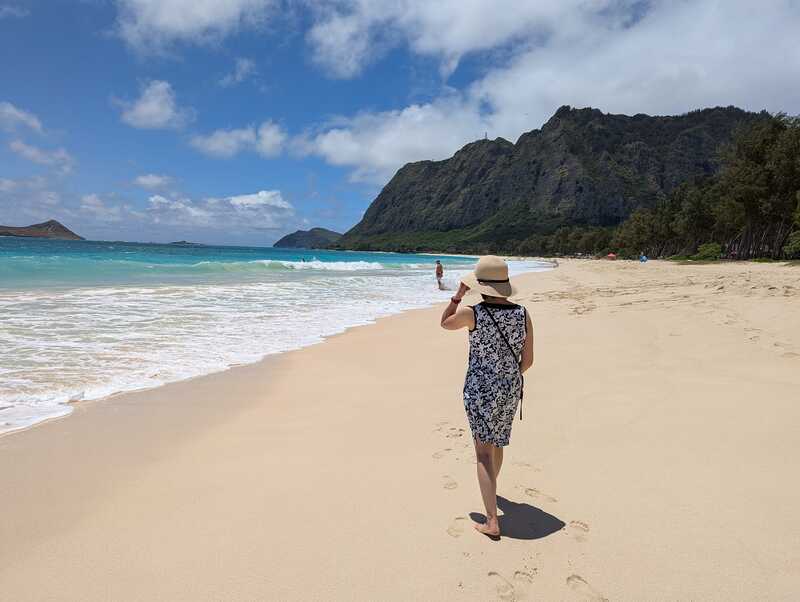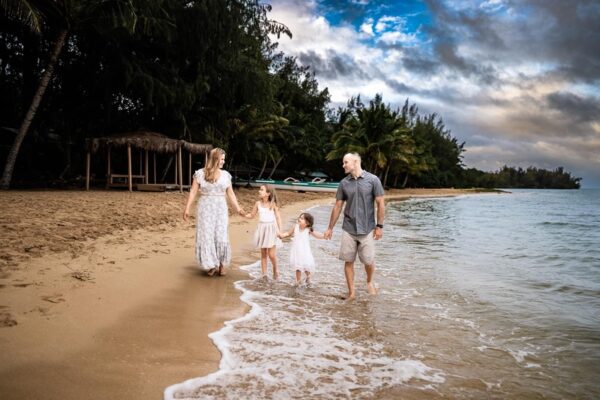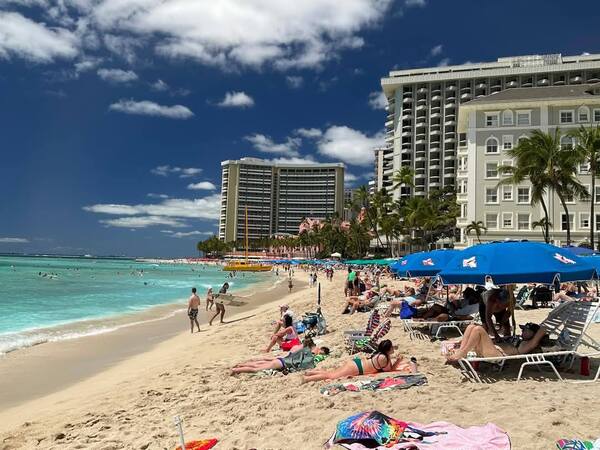Blog
What To Wear To Hawaii In July 2025?
July represents the peak of Hawaii’s summer season, the tropical climate demands thoughtful consideration of fabric choices, sun protection, and cultural sensitivity. Whether you’re planning beach days, hiking adventures, or romantic dinners overlooking the Pacific, understanding what to wear will enhance your comfort, protect your health, and show respect for local customs.
This article, Hawaiiantrend will guide you in choosing and preparing the perfect outfits to make your Hawaii trip unforgettable and full of beautiful memories.
Understanding Hawaii’s July Weather and Climate
Typical Temperature and Humidity Levels
Hawaii’s July weather creates a perfect storm of warmth and humidity that requires strategic clothing choices. Daytime temperatures typically range from 80-88°F (27-31°C), while nighttime temperatures rarely drop below 70°F (21°C). The trade winds provide some relief, but humidity levels consistently hover around 60-70%, creating that characteristic tropical feeling where the air feels thick and enveloping.

This combination of heat and moisture means your clothing needs to work harder than in dry climates. Fabrics that trap moisture against your skin will quickly become uncomfortable, while breathable materials allow air circulation and moisture evaporation. The consistent warmth also means you’ll need minimal layers, but the humidity requires materials that can handle constant moisture without becoming clingy or developing odors.
Microclimates: Coastal vs. Inland and Windward vs. Leeward
Hawaii’s diverse geography creates distinct microclimates within short distances, significantly impacting your clothing needs. The windward sides of the islands, which face the prevailing northeast trade winds, receive more rainfall and feel slightly cooler due to increased cloud cover. These areas, like Hilo on the Big Island or the North Shore of Oahu, may require a light rain jacket or quick-dry layers.
The leeward sides, protected from trade winds, tend to be drier and warmer. Areas like Kona on the Big Island or West Maui offer more consistent sunshine but can feel significantly hotter, especially during midday hours. Elevation also plays a crucial role – temperatures drop approximately 3-5°F for every 1,000 feet of elevation gain. If you’re planning to visit Maui’s Haleakala or the Big Island’s Mauna Kea, you’ll need warmer layers despite the summer season.
Sun Exposure and Rainfall Patterns in July
July brings some of the strongest UV radiation of the year to Hawaii, with UV index levels regularly reaching 11-12, classified as “extreme.” This intensity, combined with reflection off water and sand, can cause severe sunburn within 15-20 minutes of unprotected exposure. Your clothing choices must prioritize sun protection without sacrificing comfort in the heat.
Rainfall patterns in July are typically brief and localized, often occurring as afternoon or evening showers that last 10-30 minutes. These “liquid sunshine” moments can provide welcome relief from the heat but also mean you should choose quick-drying fabrics and always have a light layer available. The rain is usually warm, so waterproof gear is less about staying warm and more about comfort and protecting electronics or other sensitive items.
What to wear to hawaii in July?
Daytime Casual Wear: Shorts, Tank Tops, Sundresses, and Swimwear
Lightweight shorts in quick-drying materials work best, with 7-9 inch inseams providing good coverage while allowing maximum airflow. Look for shorts with moisture-wicking linings and multiple pockets for carrying sunscreen, phones, and small essentials.
Tank tops and sleeveless shirts provide essential cooling while offering some sun protection for your torso. Choose fitted styles that won’t billow in trade winds but aren’t so tight they restrict movement. Sundresses offer the perfect combination of comfort and style, allowing maximum airflow while keeping you appropriately covered for various activities.
Swimwear deserves special attention in July’s intense sun. Pack at least two complete sets to ensure you always have a dry option available. Look for suits with UPF ratings for additional sun protection, and consider styles with slightly more coverage for extended beach days. Board shorts for men and tankinis for women provide excellent versatility for transitioning between water activities and casual dining.
Cover-Ups and Beachwear: Sarongs, Kaftans, and Rash Guards
Versatile cover-ups are essential for transitioning between beach and casual settings. Sarongs can function as wraps, skirts, beach blankets, or even lightweight scarves. Choose lightweight, quick-drying materials in colors or patterns that complement your swimwear.
Kaftans and beach dresses provide elegant coverage while remaining cool and comfortable. These flowing garments work equally well for beachside lunches or evening strolls. Look for styles with interesting necklines or sleeve details that elevate them beyond basic cover-ups.

Evening and Dressy-Casual Options: Aloha Shirts, Light Dresses, and Light Layers
Hawaii’s evening temperatures remain warm, but air-conditioned restaurants and trade wind breezes can create a need for light layers. Aloha shirts represent the perfect blend of style and cultural appreciation when chosen thoughtfully.
Light dresses in flowing fabrics work beautifully for evening dining or cultural events. Choose styles with interesting details like embroidered trim or unique necklines that feel special without being overly formal. Midi and maxi lengths offer elegance while remaining practical for various activities.
Light cardigans, linen shirts, or lightweight blazers provide the perfect layering option for air-conditioned spaces or breezy evenings. These pieces should be substantial enough to provide warmth but light enough to carry easily when not needed.
Activity-Specific Clothing
For hiking, convertible pants that zip off into shorts provide ultimate versatility for changing conditions and elevations. Moisture-wicking long-sleeved shirts protect against sun and insects while keeping you cool.
Water sports demand specific gear based on your chosen activities. Snorkeling requires comfortable swimwear and possibly a wetsuit top for extended sessions. Surfing calls for appropriate board shorts or surf suits. Stand-up paddleboarding works well with quick-drying shorts and rash guards.
Cultural events like luaus or temple visits require respectful attire. This means covering shoulders and knees, avoiding overly tight or revealing clothing, and choosing pieces that show appreciation for local customs. Aloha wear is always appropriate and appreciated when authentic and well-chosen.
Footwear for July in Hawaii
Flip-Flops and Sandals for Beach and Casual Use
Quality flip-flops are essential for Hawaii, but not all are created equal. Look for pairs with good arch support, durable rubber soles, and comfortable straps that won’t cause blisters during extended wear. Reef, OluKai, and Rainbow Sandals offer excellent options designed specifically for tropical conditions.
Sandals with more substantial construction work well for walking on varied terrain. Brands like Teva, Chaco, and Keen provide excellent support and durability while remaining appropriate for casual dining and sightseeing. Choose styles that can handle getting wet and dry quickly.

Comfortable Walking Shoes and Sneakers for Exploring
Breathable sneakers are crucial for exploring towns, museums, and easy trails. Look for mesh uppers and moisture-wicking linings that can handle humid conditions. Brands like Allbirds, Adidas Ultraboost, and Nike Free series offer excellent ventilation and comfort.
Canvas shoes like Converse or Vans work well for casual exploration but may not provide enough support for extended walking. Consider lightweight hiking shoes for more demanding exploration while maintaining a casual appearance.
Hiking Boots and Water Shoes for Outdoor Adventures
Serious hiking requires proper footwear, especially on volcanic terrain. Lightweight hiking boots with good ankle support and aggressive tread patterns work best for most Hawaiian trails. Merrell, Salomon, and Lowa offer excellent options that balance protection with breathability.
Water shoes are essential for rocky beaches, tide pools, and waterfall hikes. They protect your feet from sharp rocks and provide traction on slippery surfaces. Look for quick-drying materials with drainage holes and secure closures.
Sun Protection and Accessories
Reef-Safe Sunscreen: Why It’s Essential and How to Choose
Hawaii has banned sunscreens containing oxybenzone and octinoxate due to their harmful effects on coral reefs. Choose mineral-based sunscreens with zinc oxide or titanium dioxide as active ingredients. Brands like Badger, Blue Lizard, and Stream2Sea offer excellent reef-safe options.
Apply sunscreen 30 minutes before sun exposure and reapply every two hours, more frequently when swimming or sweating. Don’t forget often-missed areas like ears, feet, and the back of your neck.
Hats, Sunglasses, and UV-Protective Clothing
Wide-brimmed hats provide crucial protection for your face, neck, and ears. Look for hats with UPF ratings and chin straps to prevent loss in trade winds. Baseball caps work for casual wear but don’t provide adequate neck protection.
Sunglasses should offer 100% UVA and UVB protection. Polarized lenses reduce glare from water and sand, making them particularly valuable for beach activities. Wraparound styles provide additional side protection.
UPF-rated clothing offers built-in sun protection without the need for constant sunscreen reapplication. Many brands now offer stylish UPF clothing that doesn’t look overtly technical.

Lightweight Scarves and Hydration Gear
Lightweight scarves or wraps serve multiple purposes in Hawaii – sun protection, modesty for temple visits, and emergency warmth in air-conditioned spaces. Choose breathable materials like cotton or linen in light colors.
Staying hydrated is crucial in tropical heat. Insulated water bottles keep drinks cool longer, while wide-mouth designs make refilling easier. Many hotels and attractions offer water refill stations, making reusable bottles both practical and environmentally responsible.
Packing Smart for Activities and Events
Beach Days: Essential Items and Clothing
Beach days require strategic packing to maximize comfort and convenience. Multiple swimsuits allow for quick changes when one gets sandy or wet. Pack a large, lightweight beach bag that can handle sand and water while carrying all your essentials.
Quick-dry towels take up less space and dry faster than traditional cotton towels. Waterproof phone pouches protect your electronics while allowing touch-screen use. Consider packing a lightweight beach umbrella or pop-up tent for shade during extended beach sessions.
Hiking and Outdoor Adventures: Gear and Clothing
Hiking in Hawaii requires preparation for sudden weather changes and challenging terrain. Pack layers that can be easily added or removed as conditions change. Convertible pants work well for varying temperatures and terrain.
Bug spray becomes essential for certain hikes, particularly those through rainforests or near water sources. Headlamps are valuable for early morning starts or potential delays. A small day pack distributes weight evenly and keeps hands free for navigation.
What to wear to hawaii in July? Focus on lightweight, breathable fabrics that can handle humidity and quick weather changes. Prioritize sun protection through both clothing choices and accessories, while respecting local customs and environments.
Remember that Hawaii’s beauty lies not just in its landscapes but in its people and culture. Thoughtful clothing choices show respect for both the environment and local communities while ensuring your own comfort and enjoyment. With proper preparation, you’ll be ready to embrace everything Hawaii has to offer while looking and feeling your best throughout your island adventure.
